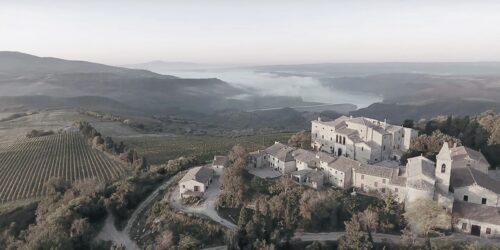
By Francesco Bianchini
The village of Titignano rests upon a high rock ledge, enjoying an enchanting view of the man-made lake of Corbara, formed decades ago by reining the waters of the Tiber between Todi and Orvieto. There a bulky 17th-century palazzo, with its fine loggia faces a stone-paved village square and a church. A row of low houses, once inhabited by tenant farmers, are vacation homes today, filled by people fleeing urban clatter, and the whole place livens on weekends when the castle unpretentiously serves fine Umbrian country cuisine.
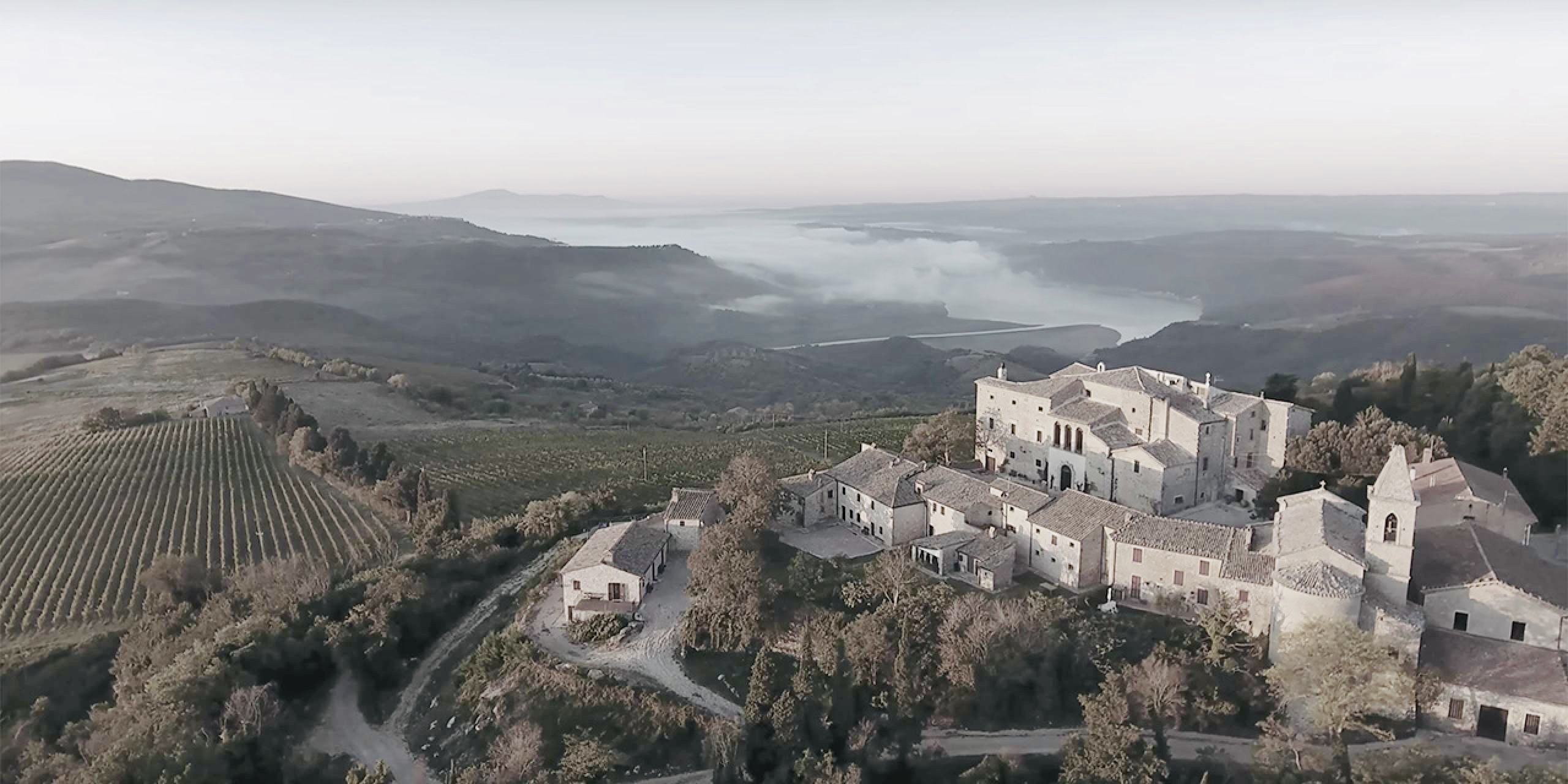
One of the oldest, noble and wealthiest of Florentine families, the Corsini bought Titignano around the end of the 17th century, along with neighboring Salviano on the opposite shore of the lake. Thanks to wealth from wool guilds and ownership of banking houses, they shrewdly snatched up everything else then available in Papal lands, gaining titles as princes and dukes from Umbrian buys, like Sismano and Casigliano, further south.
Upon the death of prince Pio Tommaso Corsini in 1980, the names of his Umbrian possessions were written on scraps of paper and drawn by lot by his heirs. Thus Titignano landed in the hands of his youngest daughter, donna Nerina Corsini, marchesa Incisa della Rocchetta by virtue of her marriage. And some years ago, one ferragosto – Italy’s sacrosanct August holiday, with its deserted cities, lowered store grates and abandoned dogs — the marchesa invited Dan and me for lunch. With scruffy dyed hair – tied in a careless ponytail that day – and wearing red leather sandals, a linen blouse, and matching slacks of a color halfway between tobacco and orange, she greeted us hidden by a pair of over-sized dark glasses, possibly all retrieved – it seemed to me – from a personal méli-mélo dating from Mod Squad days, from ‘a-go-go’ times. Once the sunglasses came off, however, we could take note of her beautiful and intelligent blue eyes.
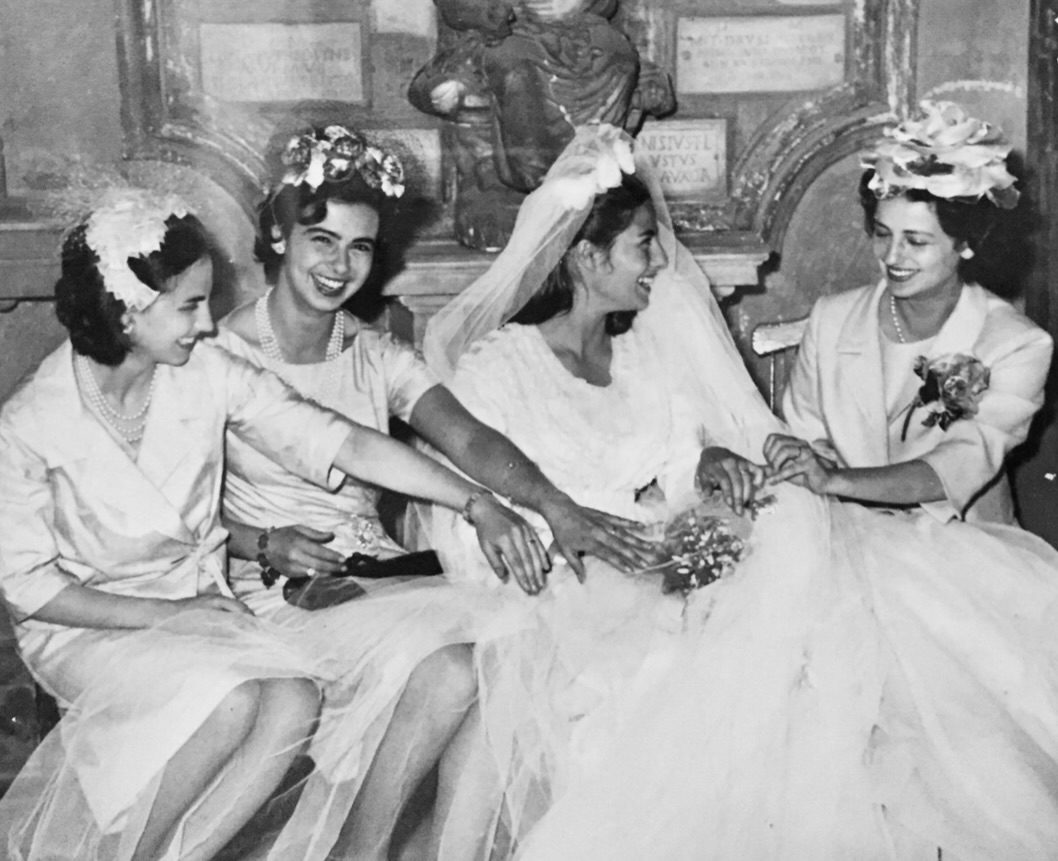
We were not shown into the Great Hall of Titignano, with its immense stone fireplace and spectacular ceiling with the Corsini coat-of-arms stamped on each terracotta tile; nor even in the adjoining room – simple yet formal, called ‘della Marchesa’ – both of which stood in readiness for paying guests. Instead, we were seated in the old, unused kitchen with its Tuscan-style fireplace – large as a hut, with banquettes to sit amid the complicated machinery that formerly turned the spit. The lazy lunch we were having was that of the harvest time. A succession of dishes arrived from a distant kitchen: assorted bruschette, two kinds of pasta – cappellacci with truffles, tagliatelle in goose sauce – then roasted chicken with fried eggplant, and, lastly, a typical Umbrian pastry, slathered with a tart plum jam. The wines were those of Nerina’s own Salviano estate, excellent whites and reds.

As lunch progressed, the marchesa sat sideways at the table so that, between one course and another, she could light one of her unfiltered Nazionali cigarettes – the preferred brand of Italy’s working class. Conversation thus plunged like the billows of smoke from those pestilential cigarettes, but on the subject of food, it returned punctually to rest. Although fits of coughing shook her from head-to-toe, she talked with catarrhus voice and the lightest of Florentine accents, of her family’s Umbrian holidays when she was a little girl. ‘Getting here from Florence was like a trip abroad; it took four hours,’ she recalled. ‘The road that skirts the lake didn’t exist, and the only way to get here was via the old Napoleonic carriage route, all twists and turns. And in those days there was no running water at Titignano – not until one day when we arrived to learn that a shower had been installed. We thought, a shower, a miracle! We were always sweaty and dusty from the long journey, and up to then had to take turns immersing ourselves in a big bathing barrel. And now a shower – well, a so-called shower! Nothing more than a rudimentary tank that tipped over when you pulled a cord!’
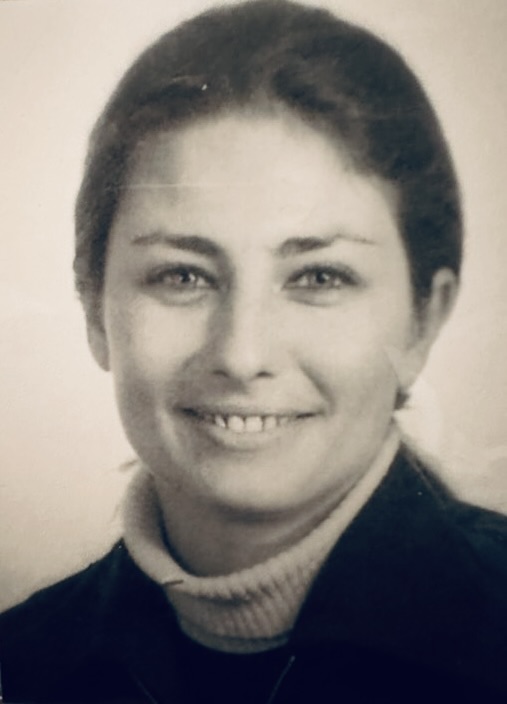
Aware of the blurred culinary border between Umbria and Tuscany, I asked her if she found Umbrian cooking as convincing as Tuscan, which inspired an umpteenth anecdote on her part. ‘One day, under the pretext of checking an appraiser’s estimate on a damaged tobacco crop, my father – knowing I was freshly licensed to drive – said let’s go to Titignano! That was my first real journey, with me driving his Fiat Millecento, and I did pretty well. When we arrived, the farm manager’s wife cooked us a hen stewed in red wine. An all-umbrian, lip-smacking delight!’ She paused to light another cigarette, looking at me with mischievous eyes. ‘Care for the recipe? Very simple – you think it’s the wine – but no – it’s not the wine. You can use any red: Bordeaux, Chianti, Pinot Nero – it makes no difference. The hen is the essential thing. It has to be a ten-year-old hen!’ I stared at her and blurted out: and why not a grouse, a flamingo, or a moray eel in the manner of Apicius’ treatises? She laughed. ‘If you’re lucky, you can run one over on the road.’ She lit another Nazionale. ‘You want an easier dish? What is more prosaic than Tuscan panzanella? You dice tomatoes, cucumbers, onions, basil leaves in a bowl directly on top of pieces of stale bread in such a way that the juices impregnate, and soften them. What could be simpler and more delicious?’ She inhaled from her cigarette with satisfaction and – perhaps anticipating an objection similar to the one about the hen – concluded by asking ‘but where to find authentic Tuscan bread nowadays?’
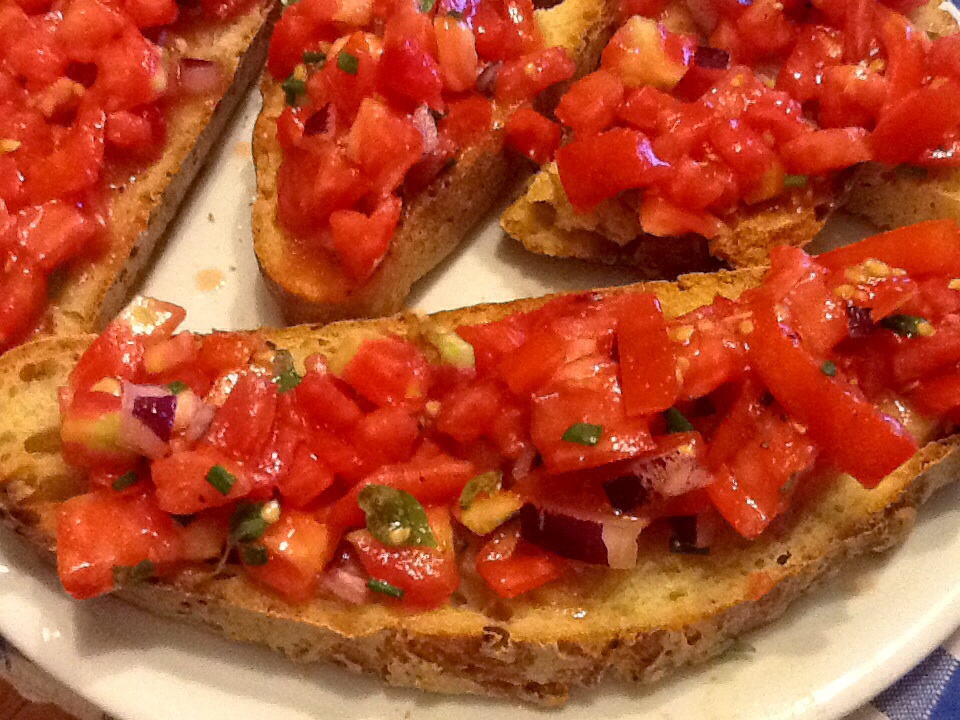
I do not remember exactly when panzanella became a classic of my own family’s summer lunches. Not the Tuscan salad version though but the one closer to our Roman roots with the vegetables diced on top of whole slices of country bread. It was certainly not included in the repertoire of the various cooks who succeeded each other in the kitchen at Collevalenza. In that era, our menus seemed fixed by immutable rules; a dogma embedded in the bourgeois walls of the home; a matter on which any amendment seemed superfluous. A sofa could be reupholstered, furniture moved from one room to another, a mirror or a portrait change places, but what need was there to go looking for novelties in eating, when the old ways had always pleased everyone? Never could anything be improvised because our cooks were impervious to any change, and their hostile and skeptical expressions would discourage any attempt. ‘That’s the way it was always done,’ they would cut it short, not realizing, however, that alterations, adaptations and hybridizations had been there – albeit, as barely perceptible as the slow erosion of water on rock – influenced by sporadic trips to Rome, or on vacation somewhere, or the tastes or intolerances of some tutelary deity. ‘We do as it was done for the late master, or the late signora,’ they would retort.
But at the demise of the last cook, an event that coincided with our momentous move from the castle of Collevalenza to the country house called La Cervara, we reappropriated the kitchen that then became a free field, open to all possibilities. Henceforth we experimented, imported, simplified, and – why not? – no one then needed to spend entire mornings preparing lunch. With everyone’s chaotic cooperation, it was possible to put a cheerful summer meal on the table, and in no time. It is likely that panzanella then made its appearance on the refectory table set on our western terrace, where each of us reached for the tray containing the soggy slices, dropping fragments of tomato, cucumber and onion scented with fresh basil on the way back to our plates, as the afternoon haze unraveled the green tongues of the cypress trees, and watered down the yellow riot in the sunflower fields below.



